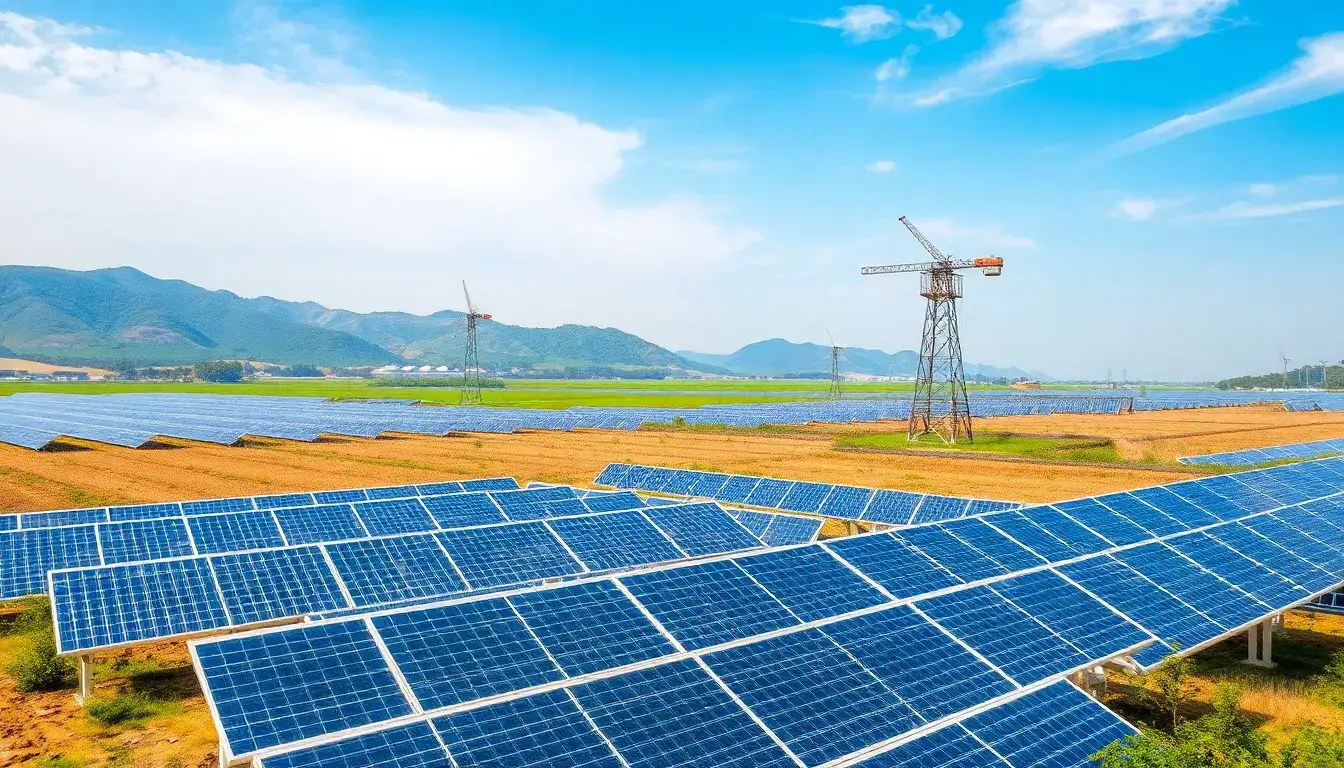
Photovoltaics – A Key Player in the Energy Sector
The energy industry is continuously evolving, and recent developments in photovoltaic (PV) technology and projects are at the forefront. These advancements are not just about generating electricity; they reflect a broader commitment to sustainable energy solutions.
Significant Projects in Solar Energy
On March 13, a report by CCTV News highlighted the progress of the CGN Delingha Solar Thermal Power Project in Qinghai, which is the largest single solar thermal storage project in China, boasting a total capacity of 1 million kilowatts. The project features an impressive solar energy storage ratio. Currently, the 800,000-kilowatt photovoltaic segment has successfully connected to the grid as of December 13, 2024. Workers are now installing the heliostats for the 200,000-kilowatt solar thermal storage component. Project Deputy Manager, Qi Jinguo, noted that the main structures, including the heat collection tower and main plant, have been completed and are expected to be fully installed by late May.
In Yunnan Province, the Jinggu County has added 78.3 megawatts of new grid-connected capacity through photovoltaic projects, marking a significant step towards integrating green energy into local rural development. The projects align with the philosophy that “lucid waters and lush mountains are invaluable assets,” promoting renewable energy as a vehicle for achieving carbon neutrality and enhancing ecological balance.
Distributed Solar Initiatives
The Huajian Coal Company successfully connected a distributed solar power project to the grid on March 25, emphasizing the company’s commitment to integrating coal and renewable energy. Located in the Inner Mongolia Autonomous Region, the project has a total capacity of 6,000 kilowatts and utilizes 10 hectares of land from an open-pit coal mine. It is expected to generate 11.87 million kilowatt-hours of green electricity annually, equivalent to reducing carbon dioxide emissions by approximately 9,700 tons.
On March 21, the Dandong Power Plant launched its distributed solar power project, also successfully connecting to the grid. With a capacity of 8,300 kilowatts, it operates on a self-consumption model with excess electricity fed into the grid, which is projected to save over 3,000 tons of standard coal and reduce carbon emissions by about 8,500 tons annually.
Innovations in Solar Technology
Research from Stanford University indicates that transition metal dichalcogenide (TMD) solar cells could achieve efficiencies of up to 36.5% in indoor environments. TMDs are promising due to their excellent semiconductor properties and high light absorption coefficients, making them suitable for flexible and semi-transparent solar cells used in various applications.
Additionally, the National Energy Administration has issued a directive to facilitate the orderly development of rural distributed photovoltaic systems. The guidelines stress the importance of market dynamics without imposing mandatory industry affiliations or monopolistic practices, aiming for sustainable growth in distributed solar energy.
Recent Developments in Solar Power Projects
On March 17, the Dadu River Company was awarded the development rights for a 1.15 million-kilowatt photovoltaic project in Aba County, Sichuan Province. This project represents the largest photovoltaic initiative in the region and is crucial for promoting clean energy and supporting local green development.
Furthermore, on March 10, the Usha River Photovoltaic Project achieved full grid connection, adding significant capacity to the region’s renewable energy portfolio. This project is expected to produce 200 million kilowatt-hours of clean energy annually, further contributing to the local economy’s low-carbon transition.
Future Directions
Looking ahead, the focus will remain on optimizing the synergies between distributed photovoltaic systems and energy storage solutions to enhance rural energy transformation and support sustainable development initiatives. As of the end of 2024, China’s distributed photovoltaic capacity is expected to reach 370 million kilowatts, accounting for 42% of the total installed photovoltaic capacity.







